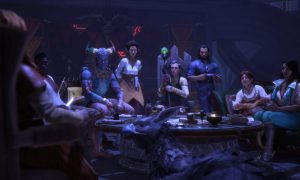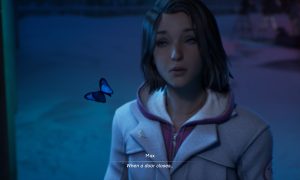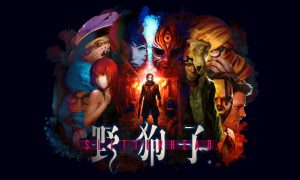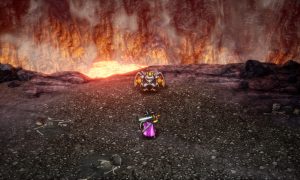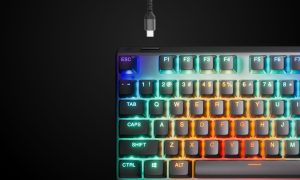 I always knew it on an intellectual level, but it never really struck me until this week: Bioware has been making great games for a long time. I can’t think of many companies with such a good track record, going back to the late 90s, ranging all the way back to Baldur’s Gate, which has become one of the seminal western RPGs. You can get a copy of the game through GoG.com, but the game is so old that it’s difficult for modern gamers to go back—especially considering its resolution is locked at 800×600. Lucky for us that a group of fans decided to modernize the classic RPG for our widescreen pleasure. Did they ruin a classic, or did they bring it up to modern standards? Read on to find out.
I always knew it on an intellectual level, but it never really struck me until this week: Bioware has been making great games for a long time. I can’t think of many companies with such a good track record, going back to the late 90s, ranging all the way back to Baldur’s Gate, which has become one of the seminal western RPGs. You can get a copy of the game through GoG.com, but the game is so old that it’s difficult for modern gamers to go back—especially considering its resolution is locked at 800×600. Lucky for us that a group of fans decided to modernize the classic RPG for our widescreen pleasure. Did they ruin a classic, or did they bring it up to modern standards? Read on to find out.
It would be difficult to make Baldur’s Gate into a truly bad game, given the source material. With its setting drawn straight out of Dungeons and Dragon’s Forgotten Realms, there’s a lot to love about the Sword Coast. The game takes you from a monastic library-fortress, to dark forests to deep mines as you move along its story. The tale has two main threads involving an iron shortage and a man sending bounty hunters after you. Those might sound really serious, but the game keeps things pretty lighthearted by adding in a lot of interesting characters
“Magic is impressive, but now Minsc leads! Swords for everyone! “
[singlepic id=10097 w=320 h=240 float=left]If I had to pick a single best feature in Baldur’s Gate, it would have to be the supporting cast. For the most part each character is unique and fills their own slot in the game world. They tend to have strange personality quirks, like Khalid’s stammer, Xan’s pessimism, or Jahiera’s overbearing self-righteousness. All the characters have their own voiceover, which really adds a lot—you get a feel for each person’s personality through their speech patterns and accents. The obvious standout is Minsc—an oh so quotable ranger who’s best friend is a “Giant Miniature Space Hamster” named Boo—but the others are all pretty interesting in their own right—except Imoen, but she comes into her own in the sequel.
That said, it’s a shame that the game doesn’t really reward you for changing your party around. To have a character join your party you have to be physically speaking with them, and they tend to be tucked away in inns or out in the wilderness. Having some sort of common inn or meeting place for all the possible companions would have been nice. Another weird design choice is that characters only gain experience and levels when they’re adventuring with the protagonist, which means that if you let a character fall behind a few levels they’re going to be a weak link in a fight. It’s not that it can’t be done, but it definitely encourages the player to pick a party and stay with them throughout the whole game.
[singlepic id=10100 w=320 h=240 float=right]Having a large bunch of companions to follow me around is all well and good, but you’ll also have the chance to create your own protagonist. Happily, the Enhanced Edition allows you to use the entire suite of classes and kits that were introduced in Baldur’s Gate II, such as the Monk or Kensai. There is also the nice addition of a few more character portraits and voices. The new portraits are great, but the voices are somewhat lacking. None of them are as well done as well the character voice actors, but they aren’t terrible either.
Eat flaming—or, uh…possibly frosty—DEATH!
Combat in Baldur’s Gate is ripped right out of the Advanced Dungeons and Dragons handbook.” Spells and abilities are phrased in terms of attack rolls and saving throws, which means that combat is easier to understand if you know how DnD works, but if you’ve never played it you might have some trouble understanding what each spell does—ADnD wasn’t known for being particularly accessible. Baldur’s Gate took DnD’s turn based combat and reframed it to look like it’s taking place in real time, though in reality it’s still turn based, with each “round” lasting a few seconds. You can pause the game at any time, and you’ll find it really helps to do so liberally, giving you the time to plan your strategy and determine what targets you should hit.
The game does a pretty good job keeping up the challenge as you advance in levels, though it has a nasty habit of pitting you against nasty bosses when your party is at its weakest. The early segment of the game fills all the inns with powerful bounty hunters. This was pretty frustrating for me, because the inns are the only place you can safely rest to recharge your spells and abilities. Thankfully, these bounty hunter attacks become much less dangerous as you level up, but the game remains very difficult from start to finish. It will punish you mercilessly for making mistakes, so be sure to use multiple save files, and make sure you use the shiny new quicksave button.
[singlepic id=10096 w=320 h=240 float=left]I should point out that leveling up in Baldur’s Gate feels very different than in any other RPG I’ve played recently. For one thing, level ups are actually pretty rare–the game is over 50 hours long, and the level cap is only 8 instead of 30 or 50. It’s a bit frustrating to gain a huge amount of experience after completing a long and dangerous quest to have none of your party level up, but this is offset by the glee you’ll feel when it finally does happen. Each level in Baldur’s Gate is a noticeable increase in power—especially for spellcasters, who gain access to more and better spells. The difference of two levels spread over an entire party will make challenging fights into trival ones. This sense of empowerment really makes Baldur’s Gate stand out from other RPGs where a level is merely a slight increase in stats that doesn’t seem to have much impact.
“We are all heroes: You and Boo and I. Hamsters and rangers everywhere! Rejoice! “
I know what you’re thinking: If Baldur’s Gate has such a good story, great characters, and fulfilling combat, why don’t I just go buy the cheaper GoG.com version of the game? The answer, my friend, is the interface. The original Baldur’s Gate has an abominable UI. The main screen design could work on wider screens, but the original is locked to 800×600 resolution and looks really cluttered. Other game screens such as the inventory or journal are stylized to look like the they’re written on stone tablets, which is a real problem—reading grey text on the greenish-grey stone pattern is nigh impossible.
[singlepic id=10101 w=320 h=240 float=right]What Overhaul have done is to take everything you’ll love about the original and make it a bit more accessible to modern gamers on widescreen monitors. The first, and biggest improvement, is swapping over to the much-improved interface of Baldur’s Gate II. Text is easier to read, ability descriptions easier to find, and\those awful stone textures are gone. To compliment this more elegant interface, Overhaul changed the game to allow wider resolutions, which means all the different panels aren’t squeezing onto the screen so much. There are a lot of other noticeable tweaks, but those are the two really huge ones.
Graphically, the Enhanced Edition looks about the same as the original. Characters, locations, and spell effects all look similar between the two versions. The biggest difference goes back to the resolution—with the larger screen you can see the great art. The game gives the user the ability to adjust the zoom of the main screen, which is a nice treat, though at max zoom the graphics look pretty rough. Overall, the game still looks like it was made in the late 90s, but that’s exactly what I was looking for. The game still looks and feels like a Baldur’s Gate game.
[singlepic id=10098 w=320 h=240 float=left]There are a few other improvements that deserve mention. The ghastly 3D animations in the original are gone, replaced by moving illustration that I thought were a huge step up—though they did cut an important line of dialogue from the opening. The inventory screen now gives a breakdown of how your class and equipment affect your Thac0 and Armor Class. The greatest improvement is probably the quest log, which now arranges quests entries by quest, instead of by time. It’s a concession to modern gamers, but it’s one that was desperately needed.
Not content to simply remake Bioware’s masterpiece, Overhaul decided to run the risk of fan ire by adding a bunch of new content to the game. The biggest change is the addition of the Black Pits, a completely different campaign meant for those who prefer to focus on combat over roleplaying. In short, it serves as a set of arena challenges. You’re able to create an entirely new party and take them up through a bunch of levels really quickly. If you’re new to the game I’d recommend trying the Black Pits to get a feel for the different classes. Once you find one you like, export it to the Campaign, but make sure you’re certain of your choice—you’ll be with that character for a long, long time.
[singlepic id=10099 w=320 h=240 float=right]The other major content additions come in the form of three new companions: the monk Rasaad, a half-elf wild mage named Neera, and the imposing half-orc paladin Dorn. All three are interesting, and each comes with their own quest that leads to a newly created map location, but my favorite so far is definitely Neera. Both Rasaad and Dorn are given very straightforward, very serious portrayals, but Neera is absolutely hilarious. Each character fits right into the universe, so Overhaul definitly deserves some props for that.
“A den of stinking evil. Cover your nose Boo! We will leave no crevice untouched! “
It’s a shame there seems to be a bit of a backlash against Baldur’s Gate: Enhanced Edition. Some of the purists are complaining that Overhaul is somehow “ruining” the game. Frankly I find that pretty laughable—the alterations are generally so small that it would take a person with a fanatical devotion to the original to even notice them. That’s not to say that the haters don’t have some valid points—when the game first launched it was fairly buggy. I didn’t see anything game breaking but little niggling things, such as bows firing slingshot bullets. They’ve been getting better as the game updates, but it’s still been somewhat annoying to see that the game wasn’t play-tested as thoroughly as it should have been. In addition, I’ve seen a few reports of the game failing to launch after installation. I never encountered this at all, but it’s worth pointing out that the problem exists.
[singlepic id=10102 w=320 h=240 float=left]The elephant in the room that I’ve been avoiding for the last 1800 words is the huge modding community that Baldur’s Gate possesses. Did we really need an “Enhanced Edition” to Baldur’s Gate, considering that the original game is available for half the price and mods to improve the interface for free are already out there? It’s hard to say. Personally I think the new content was been enough to justify the higher price—especially the improved character creator and the new characters—but your mileage may vary.
All in all, you’ll have to make that decision for yourself. If you want to play the game as it originally looked, or if you want to pay the barrel bottom price, pick the GoG version, but if you think the game is worth a bit of money, want to play the game with a bit of tweaks to make it more usable, or want access to the excellent new content, be sure to at least give the Enhanced Edition a look. Personally, I think Overhaul deserve a lot of credit for updating the classic while maintaining everything about it that makes it great. I can’t wait for the Enhanced Editions of Baldur’s Gate II or Planescape: Torment. Live by the sword, Overhaul, live a good loooooong time!
Addie grew up near Detroit. After studying Cell Biology at the University of Michigan and spending a year looking into microscopes, Addie decided to volunteer--playing video games. hobbies run from gaming to music (voice, bass, guitar) to rugby. Addie is a strong supporter of indie and low-cost gaming, an area she thinks is underserved by the media.

See below for our list of partners and affiliates:










